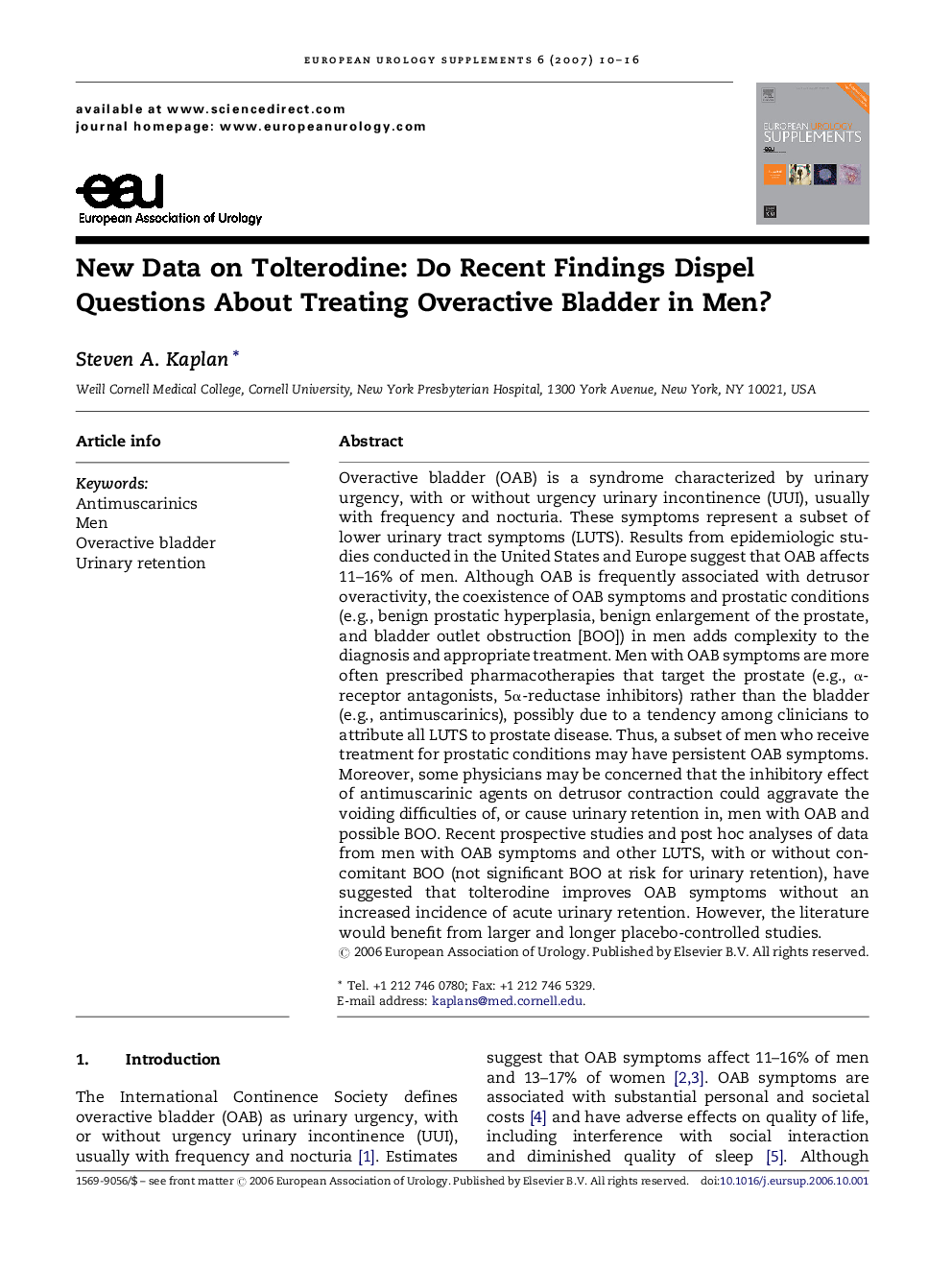| Article ID | Journal | Published Year | Pages | File Type |
|---|---|---|---|---|
| 3931144 | European Urology Supplements | 2007 | 7 Pages |
Overactive bladder (OAB) is a syndrome characterized by urinary urgency, with or without urgency urinary incontinence (UUI), usually with frequency and nocturia. These symptoms represent a subset of lower urinary tract symptoms (LUTS). Results from epidemiologic studies conducted in the United States and Europe suggest that OAB affects 11–16% of men. Although OAB is frequently associated with detrusor overactivity, the coexistence of OAB symptoms and prostatic conditions (e.g., benign prostatic hyperplasia, benign enlargement of the prostate, and bladder outlet obstruction [BOO]) in men adds complexity to the diagnosis and appropriate treatment. Men with OAB symptoms are more often prescribed pharmacotherapies that target the prostate (e.g., α-receptor antagonists, 5α-reductase inhibitors) rather than the bladder (e.g., antimuscarinics), possibly due to a tendency among clinicians to attribute all LUTS to prostate disease. Thus, a subset of men who receive treatment for prostatic conditions may have persistent OAB symptoms. Moreover, some physicians may be concerned that the inhibitory effect of antimuscarinic agents on detrusor contraction could aggravate the voiding difficulties of, or cause urinary retention in, men with OAB and possible BOO. Recent prospective studies and post hoc analyses of data from men with OAB symptoms and other LUTS, with or without concomitant BOO (not significant BOO at risk for urinary retention), have suggested that tolterodine improves OAB symptoms without an increased incidence of acute urinary retention. However, the literature would benefit from larger and longer placebo-controlled studies.
